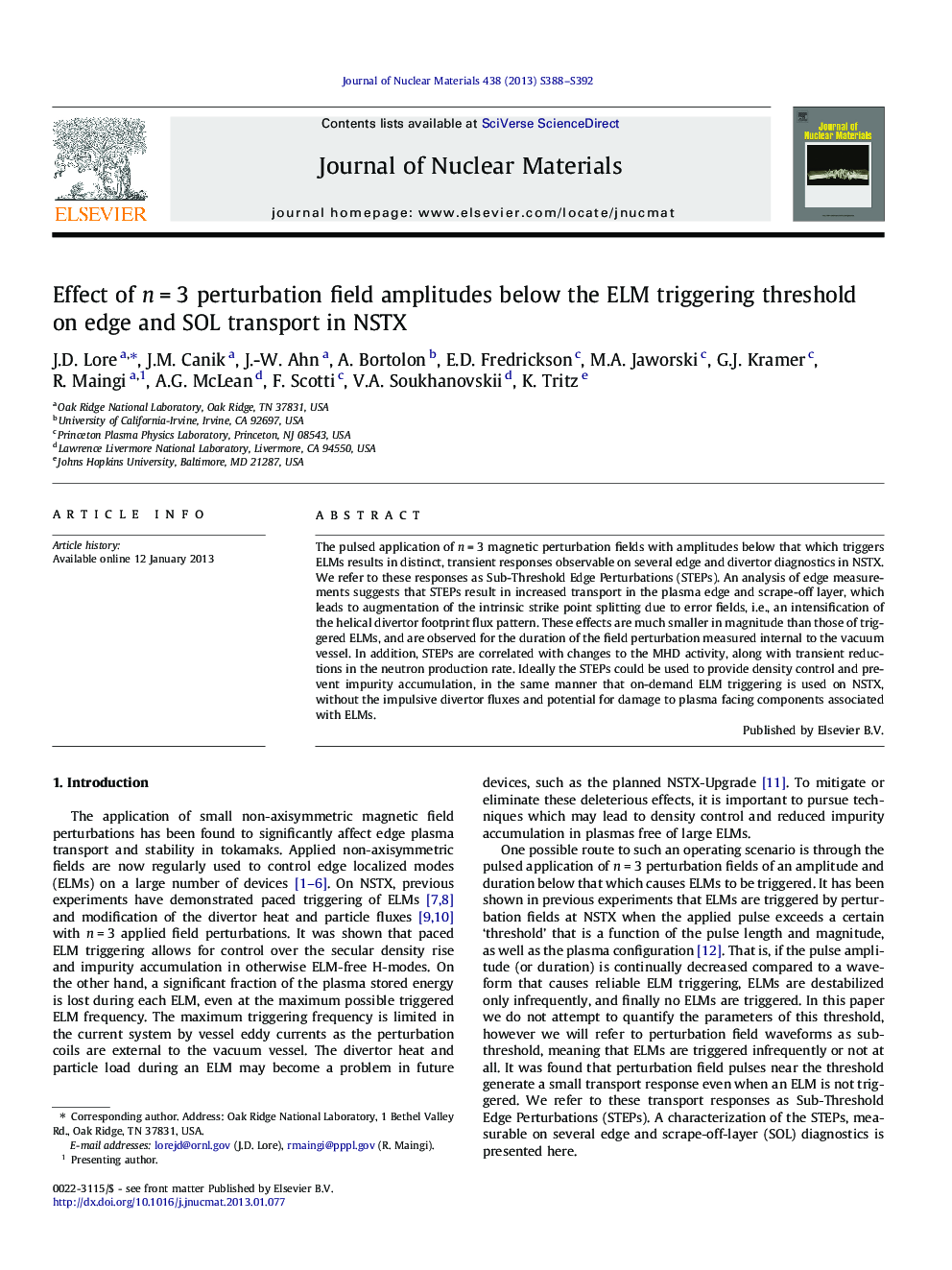| Article ID | Journal | Published Year | Pages | File Type |
|---|---|---|---|---|
| 10645017 | Journal of Nuclear Materials | 2013 | 5 Pages |
Abstract
The pulsed application of n = 3 magnetic perturbation fields with amplitudes below that which triggers ELMs results in distinct, transient responses observable on several edge and divertor diagnostics in NSTX. We refer to these responses as Sub-Threshold Edge Perturbations (STEPs). An analysis of edge measurements suggests that STEPs result in increased transport in the plasma edge and scrape-off layer, which leads to augmentation of the intrinsic strike point splitting due to error fields, i.e., an intensification of the helical divertor footprint flux pattern. These effects are much smaller in magnitude than those of triggered ELMs, and are observed for the duration of the field perturbation measured internal to the vacuum vessel. In addition, STEPs are correlated with changes to the MHD activity, along with transient reductions in the neutron production rate. Ideally the STEPs could be used to provide density control and prevent impurity accumulation, in the same manner that on-demand ELM triggering is used on NSTX, without the impulsive divertor fluxes and potential for damage to plasma facing components associated with ELMs.
Related Topics
Physical Sciences and Engineering
Energy
Nuclear Energy and Engineering
Authors
J.D. Lore, J.M. Canik, J.-W. Ahn, A. Bortolon, E.D. Fredrickson, M.A. Jaworski, G.J. Kramer, R. Maingi, A.G. McLean, F. Scotti, V.A. Soukhanovskii, K. Tritz,
